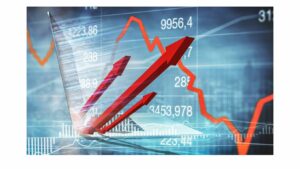Quantitative market research stands out as a powerful tool for gathering data and making informed decisions. Unlike qualitative research, which delves into the why behind consumer actions, quantitative research focuses on the what, using numerical data to identify trends and patterns.
Companies leverage quantitative market research to measure market size, track customer satisfaction, and forecast future trends. By employing methods like surveys, questionnaires, and statistical analysis, businesses can gain a clear, objective view of their market landscape.
 Key Features Of Quantitative Market Research
Key Features Of Quantitative Market Research
Quantitative market research relies on structured methods to collect and analyze numerical data. These key features ensure reliable and actionable insights for businesses.
Structured Data Collection
Researchers collect data using structured methods like surveys, questionnaires, and experiments. These tools ensure consistency, enabling comparison and analysis. Standardized formats and predefined questions minimize bias and enhance data reliability.
Large Sample Sizes
Quantitative research involves large sample sizes to ensure representativeness. This approach improves the accuracy of results and allows for generalization. Larger samples reduce the margin of error and increase confidence in the findings.
Statistical Analysis
Statistical analysis turns raw data into meaningful insights. Techniques like regression analysis, hypothesis testing, and correlation aid in identifying patterns and relationships. These methods support data-driven decision-making and prediction of market trends.
Methods Used In Quantitative Market Research
Quantitative market research employs structured methods to gather and analyze numerical data. These methods ensure that businesses can rely on concrete evidence for decision-making.
Surveys
Surveys involve collecting data through structured questionnaires distributed to a target audience. These tools allow researchers to gather large volumes of data on consumer preferences, behaviors, and demographics. Online, telephone, and face-to-face surveys are common formats. Through carefully designed questions, surveys can reveal insights into customer satisfaction, product usage, and market needs.
Experiments
Experiments measure the effects of controlled changes on a particular variable. Researchers manipulate one or more independent variables to observe their impact on dependent variables, providing causality insights.
In market research, experiments might test the effect of price changes on sales volume or the impact of advertising on brand perception. Lab, field, and online experiments are typical methods.
Observational Studies
Observational studies involve monitoring and recording consumer behaviors in natural or controlled environments. Unlike surveys, these studies don’t interfere or manipulate variables, capturing authentic data. Researchers might analyze shopping habits in retail settings or web browsing behavior online. This method helps identify patterns and preferences, enriching the understanding of market dynamics without bias.
Advantages Of Quantitative Market Research
Quantitative market research provides several benefits to businesses by offering reliable and actionable insights.
Objectivity And Accuracy
Quantitative market research enhances objectivity and accuracy by relying on numerical data. Structured data collection methods such as surveys and questionnaires minimize personal bias. These tools ensure consistency, leading to precise and reliable data. Statistical tests, including regression analysis and hypothesis testing, further refine results and verify findings, ensuring high data accuracy.
Generalizability
Quantitative research enables generalizability due to its use of large sample sizes. By capturing data from a diverse and representative segment of the population, it allows the findings to be generalized to the entire market. This broad applicability aids businesses in making informed decisions that are relevant to a wider audience. Statistical sampling methods, like random sampling, bolster this representativeness.
Rapid Data Collection
Quantitative market research offers rapid data collection, which is essential for timely decision-making. Online surveys, automated tools, and data analytics platforms streamline the process, collecting vast amounts of data quickly. This efficiency helps businesses respond swiftly to market trends and consumer behavior changes, maintaining a competitive edge.
 Limitations Of Quantitative Market Research
Limitations Of Quantitative Market Research
While quantitative market research offers invaluable insights it’s not without its limitations. One significant drawback is its reliance on numerical data which can sometimes overlook the nuances of consumer behavior. This approach may fail to capture the emotional and psychological factors driving purchasing decisions.
Another limitation is the potential for response bias in surveys and questionnaires. Participants might not always provide honest answers leading to skewed results. Additionally the structured nature of quantitative methods can restrict the depth of information collected.
Despite these challenges quantitative market research remains a powerful tool for businesses. By understanding its limitations companies can complement it with qualitative methods to gain a more holistic view of their market. This balanced approach ensures more comprehensive and effective decision-making.


